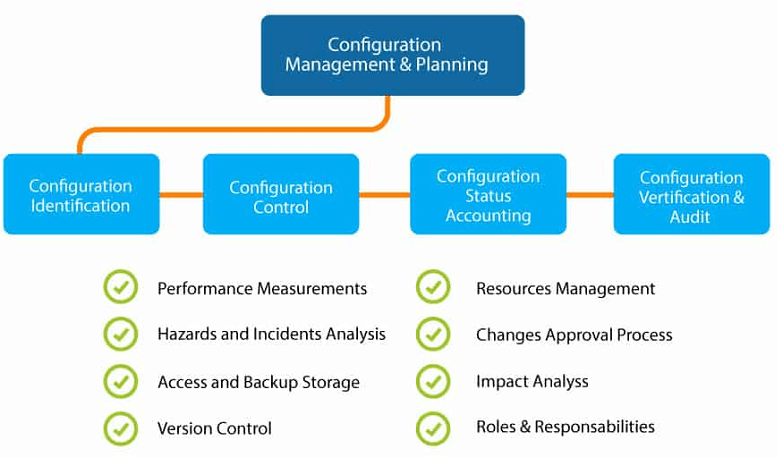Configuration Management
System administrators regularly execute repetitive tasks such as server installation, server configuration, etc. By writing some scripts, they can automate this function, but when you are operating on big infrastructure, it is a very difficult job.
To solve this difficulty, configuration management came into the market. Configuration management is the process of maintaining software and computer systems like networks, servers, storage in configured, desired, and consistent state.
Through configuration management, we can access the exact historical record of system position for project management and audit purposes.
By the help of Configuration Management, we can remove the following challenges:
- Finding out which components to modify when the needs change.
- Need for reimplementation because of the requirements changes in the last implementation.
- If any component is replaced with the new but flawed version, then it needs to revert the previous version.
- Need to replace the wrong component since the admin was unable to determine which component should be replaced.
Configuration Management Process
A configuration item (CI) is an infrastructure element or any service component or any component that needs to manage in order to ensure the successful delivery of services. Configuration items such as individual documents, model plans, etc.
Configuration management has different interdependent processes or activities. These activities are as follows:
- Configuration Identification
- Change Management
- Configuration Status Accounting
- Configuration Audits
Let’s see these activities in details:
Configuration Identification
- It labels h/w and s/w configuration items with a unique identifier.
- It identifies the documentation that defines a configuration item.
- It is used to group related configuration items into the baseline.
- It is used to label revisions to configuration items and baselines.
Change Management
It deals with the changes either at the individual or organization level.
Configuration Status Accounting
It is used to report the configuration item details such as hardware, software, firmware, etc. and all deviations from the baseline during design and development.
Configuration Audits
Configuration Audit helps in identifying the current state of the system. It is a process of reviewing the product and its expected behavior as it is supposed that it should behave as promised to the customer. The outcome information of any quality audit and testing is used along with the configuration status accounting information, and it is done to ensure that all the promised features have been delivered.

Configuration Management Tool
There are many configuration management tools existing in the market. Some popular configuration management tools are:
- Ansible
- Puppet
- Chef
- Microsoft System Center Configuration manager
- HashiCorp Terraform
- CFEngine
- AWS OpsWorks
- Saltstack
